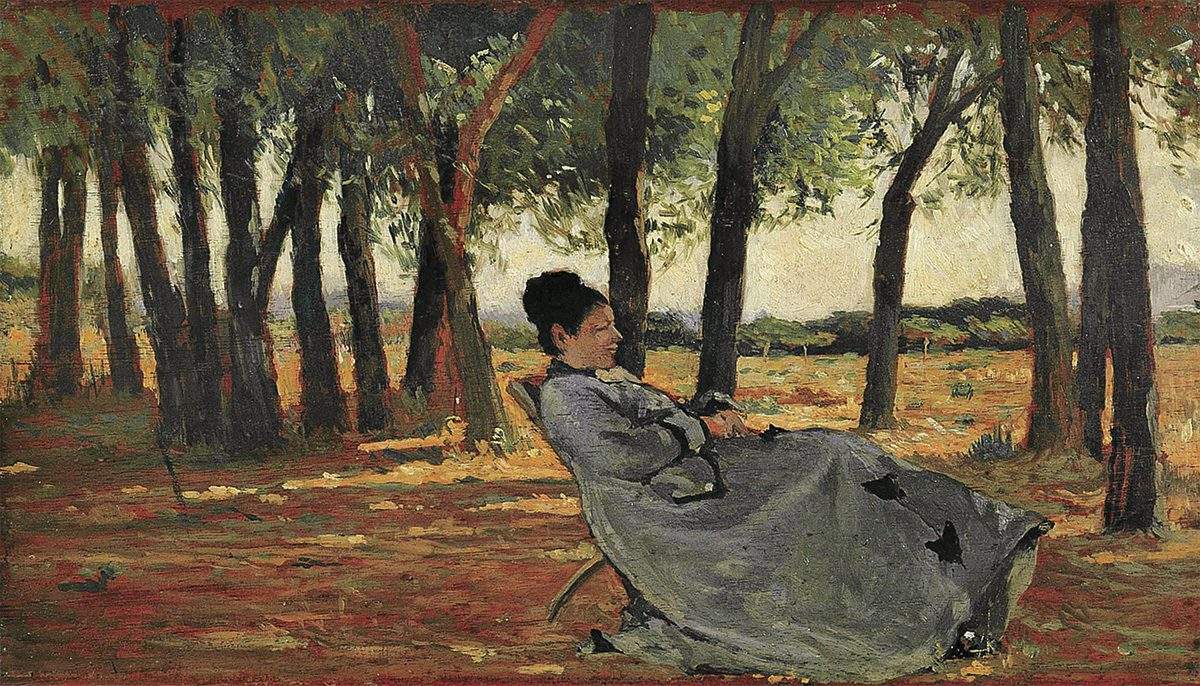Giovanni Fattori on display at GAM in Turin with more than 60 works
From October 14, 2021 to March 20, 2022, GAM in Turin is hosting an exhibition dedicated to one of the greatest artists in the history of Italian art, Giovanni Fattori (Livorno, 1825 - Florence, 1908). The exhibition is titled Fattori. Masterpieces and Openings on the 20th Century, is curated by Virginia Bertone (GAM’s chief conservator) and Silvestra Bietoletti (a great specialist in 19th-century Tuscan art), and brings to the public the works of an artist who was an original and innovative interpreter of the themes of the great battles of the Risorgimento, subjects related to life in the fields, the rural landscape, and portraits. The exhibition displays more than sixty works by the great Tuscan artist, including large-format canvases, small tablets, and a selection of etchings (Fattori was in fact one of the great masters of engraving), and is composed of nine sections that recount forty years of the great Macchiaiolo’s parabola, from 1854 to 1894, thus precisely from the beginnings of macchia painting to his mature works, passing through fundamental chapters of the 1960s and 1970s. The title of the exhibition is due to the fact that Fattori’s mature works are able to provide openings to the impending twentieth century.
Fattori’s presence at exhibitions held in Turin would then be repeated on a regular basis until 1902. Among his earliest admirers was the Turinese Marco Calderini, a pupil of Antonio Fontanesi and an influential animator of the city’s cultural scene, who came into contact with him to purchase a portfolio of lithographs, testifying to a lively appreciation for his graphic work as well. During the early years of the twentieth century, attention to Fattori’s work intensified to the point of becoming the model of a new “classical ideal”: it was then influential collectors, such as the entrepreneur Riccardo Gualino, who enriched their collections with masterpieces such as the Portrait of his Second Wife, preserved at the Galleria d’Arte Moderna in Palazzo Pitti in Florence and featured in the exhibition. In addition, in 1930, the year in which he had taken over as director of the Museo Civico di Torino, Vittorio Viale succeeded in securing for the Turin collections the panel Gotine rosse, a painting that had belonged to the Florentine collections of Giovanni Malesci and then Mario Galli and is now housed at the GAM. And it is precisely the story of the purchase of Gotine rosse that offers in the exhibition the cue to highlight the fortunes of Fattori and other 19th-century Tuscan artists in Turin in the sign of Lionello Venturi.
Also enriching the exhibition is a video that recounts the places, human events and artistic relationships that accompanied the master’s life through the words of Fattori himself, taken from letters and period documents. It is a sort of journey within a journey, intended to bring visitors closer to the Leghorn artist whose character was shy yet so charismatic as to influence future generations of artists. The exhibition features a scientific committee composed of Cristina Acidini, Giuliano Matteucci and Fernando Mazzocca, and is organized and promoted by GAM Torino - Fondazione Torino Musei and 24 ORE Cultura - Gruppo 24 ORE in collaboration with the Matteucci Institute and the Giovanni Fattori Civic Museum in Livorno.
Pictured: Giovanni Fattori, La signora Martelli a Castiglioncello (c. 1867; oil on panel, 20 x 35 cm; Livorno, Museo Civico Giovanni Fattori)
 |
| Giovanni Fattori on display at GAM in Turin with more than 60 works |
Warning: the translation into English of the original Italian article was created using automatic tools. We undertake to review all articles, but we do not guarantee the total absence of inaccuracies in the translation due to the program. You can find the original by clicking on the ITA button. If you find any mistake,please contact us.





























